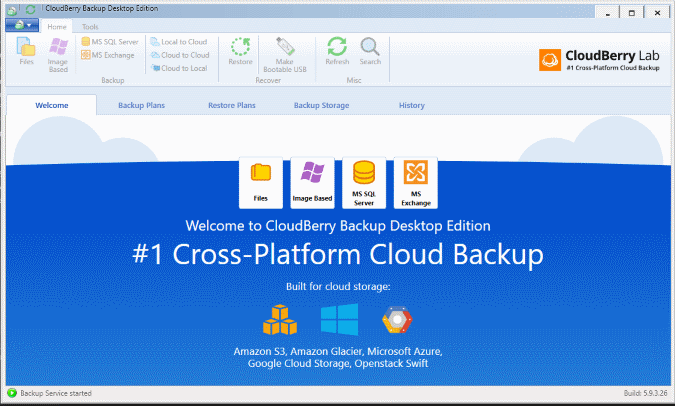
#Cloudberry backup types full#
Join Us – Webcast: Advanced Backup and Recovery with the CloudBerry & Wasabi Cloud Storage SolutionĪ differential backup is one of the solutions to the void created by spacing out full backups.

However, this can leave gaps for data created or changed between recovery points. Many also choose to conduct full backups on a weekly basis. This type is best for when you’re creating your initial backup files and when major updates occur. Piece of available data every single time, a full backup takes much more storage space, bandwidth, and time to complete. On the downside, though, since you’re backing up every You can also easily have all data in one backup set, so it’s easy to setup, differentiate versions of data from each other and reliable. This means that you have everything you need ready in its entirety for access if you need it. Full BackupĪs one of the tried and true methods of backup, a full backup means that all data you want to recover becomes backed up in the storage space. To help you find the best strategy for your information, here are the four most popular types of backup. There are multiple backup methods you can use, both for your initial backup and any updates to your data. In the Specify Azure Virtual Machine Instance Details dialog (shown below), you select or define a new Azure VM storage account for CloudBerry's use, as well as Azure VM instance details.Backing up your data is a must. The next step is where the real work takes place. Note that Azure has an internal 1TB limit for virtual hard disks, and Azure supports only Generation 1 VHDs as of summer 2016. The latter option is useful when you simply want to harvest data from your backup instead of deploying it as a live VM. You can restore as an Azure VM (which is what we're doing) or as a standalone Azure data disk. This option makes the most sense for us to select today. You have three restore types available to you: Select the storage target that houses your bare-metal backup and click Next to proceed. Let's do this! In CloudBerry Server Backup, click Restore to Azure VM from the CloudBerry Server Backup toolbar to open the Welcome to the Restore to Azure Wizard.Īlternatively, you can navigate to the Backup Storage tab, select the Disk Image node, right-click your target image, and select Restore to Azure VM from the shortcut menu. If you're an Amazon Web Services (AWS) shop and not an Azure one, the procedure I give here works the same way for Amazon's cloud it's just the terminology that will be cloud-specific. This environment differs a bit depending on whether you're using Azure Service Management (ASM) or Azure Resource Manager (ARM).
#Cloudberry backup types free#
It almost goes without saying that you'll need to have (a) an Azure subscription ( get a free account and $200 credit) and (b) a destination environment for your VM. I'm going to restore my image-based, bare-metal backup to my Azure subscription as a running virtual machine.

Take note of the Restore to EC2 and Restore to Azure VM buttons in the Recover ribbon group we'll need them to complete the restore process.ĬloudBerry Server Backup 5.1 Restore the image to Azure ^ The following screenshot shows the CloudBerry Server Backup UI after I've successfully backed up my server. Compression, encryption, retention policy, scheduling, and so forth are included. I chose the option Back up only system required partitions to back up the System Reserved Partition and the system volume.

We'll choose Image-based Backup here instead of System State. I created a file system backup target, but remember that CloudBerry Server Backup can be used to send your backups directly to a cloud storage account. To complete the wizard, you'll need to specify the following data:
#Cloudberry backup types software#
Specifically, I installed the software on a Windows Server 2012 R2 domain controller named .Ĭlick Image-based from the toolbar to start the Image-Based Backup Plan Wizard. Backs up SQL Server and Exchange Server.Has an unlimited network share limit (the Server edition is limited to five network share backup targets).Has an unlimited local storage limit (limited only by your local storage fabric capacity).


 0 kommentar(er)
0 kommentar(er)
